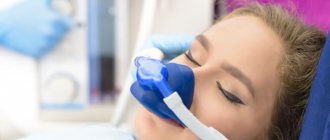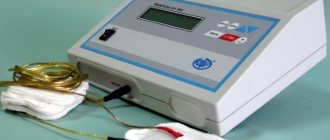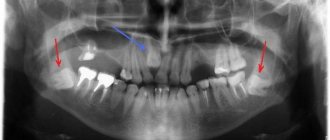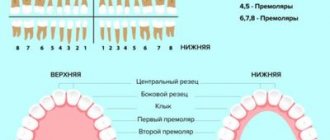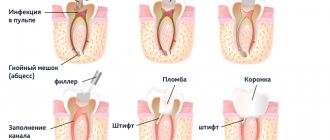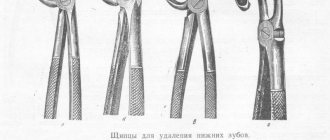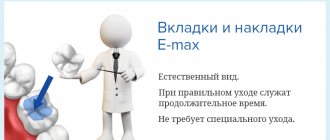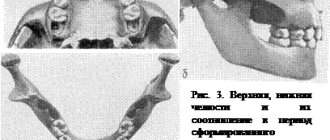MAKE AN APPOINTMENT
- Removal cost
- Indications
- Preparation
- Methods and steps
- Complications
- What to do after the procedure
- Our doctors
- Reviews
- To make an appointment with a doctor
In practice, specialists at Plomba dentistry periodically encounter cases of complete destruction of the crown of a tooth and infection of the root system, in which a purulent-inflammatory process occurs. Most often, this problem can be solved only by removing the root and remains of the tooth. But sometimes the root system can be preserved for subsequent prosthetics. How the removal will be carried out, what measures and tools will be used, the doctor will be able to decide after familiarizing himself with the clinical picture.
Indications for tooth root removal
- Complete destruction of the coronal (supra-gingival) part, affecting the root system;
- extensive purulent-inflammatory process at the root: cyst, abscess;
- longitudinal axial fracture;
- previous incorrect extraction - during removal, fragments remained in the hole, causing an inflammatory process that affected nearby tissues.
The damaged area of the tooth is easily identified visually. Additional symptoms of the need for urgent medical intervention and even possible removal of a diseased tooth are:
- twitching, throbbing pain;
- acute pain due to mechanical action - pressing, biting, chewing food;
- unpleasant odor;
- gum hyperemia;
- a purulent process is a direct indication of the need to remove the root of a diseased tooth;
- elevated body temperature.
If one or more symptoms are present, the destroyed units are removed. In some cases, incomplete removal is performed - resection of the tooth roots. This usually occurs when the root apex is affected by periodontitis, a small cyst, or granuloma. Often in such diseases the coronal part is preserved. In this case, the damaged part is removed through an incision in the gum. Subsequently, installing a crown solves the problem of restoring the chewing unit.
When is it necessary to remove a tooth root?
In all cases, the doctor decides individually whether the situation requires tooth root removal after carrying out diagnostic measures and examination using radiography or visiography. Among the most common indications for tooth root removal are the following:
- the patient suffers from aching and throbbing pain in the tooth;
- in the peri-root area there is some swelling of the gums;
- there are signs of inflammation;
- the root of the tooth is destroyed;
- third degree of tooth root mobility;
- tooth fracture is of increased complexity;
- the level at which the destruction of the dental crown is located is located below the level of the gums;
- a cyst was diagnosed.
If the rotting tooth root is not removed in a timely manner, it can give rise to a serious infectious process in the oral cavity, as well as bad breath. Problems will certainly affect healthy tissues nearby.
In some cases, even in the presence of inflammation and severe tooth decay, you can do without root removal. This will allow, after carrying out the necessary therapeutic measures, to restore or build up the tooth. The final decision on this issue is made by the dentist.
Preparing for tooth extraction
Removing a tooth or its roots is a rather complex surgical dental procedure, but it will not be difficult for the patient to prepare for it. If local anesthesia is planned to be used for pain relief, the patient should eat a large meal before visiting the dentist because:
- After removing a tooth or root, it is forbidden to eat for several hours;
- salivation after eating is significantly reduced, which will make the dentist’s work easier;
- after eating, blood glucose levels are normalized and the risk of loss of consciousness under the influence of local anesthesia is reduced
In the case of general anesthesia, on the contrary, it is necessary to abstain from eating for several hours before the removal procedure begins. Drinking alcohol before visiting the dentist is prohibited. Alcohol affects the structure of the blood and does not combine well with anesthetics, not to mention the negative impact on the human psyche and behavior.
Inflammatory and infectious diseases of any nature must be cured before surgery to remove a tooth or its roots. The dentist must be warned about the presence of allergies to certain medications, in particular to anesthesia drugs.
A normal pregnancy in general is not a contraindication to dental procedures. However, during this period the use of a number of drugs used in dentistry is prohibited, so information about pregnancy is entered into the patient’s dental record. Also, detailed information about the patient’s chronic diseases, especially heart pathologies, is recorded in the dental record.
Stages of the procedure
First, the dentist must conduct a diagnostic examination, examining the root of the tooth and the patient’s oral cavity. Particular attention is paid to the condition of the gums and the presence of inflammation. A survey and medical history allows you to choose the best method of anesthesia that will not cause an allergic reaction.
Then the doctor, based on the condition of the tooth root, selects the extraction method and prepares the instrument to be used.
An injection with an anesthetic is made into the gum in the area of the affected tooth root, and further procedures to remove the root using the chosen method are carried out after the anesthesia has taken effect.
After the tooth root is removed, the oral cavity is treated with an antiseptic, then an anti-inflammatory agent is applied to the treated area. If an incision was made in the gums, it is necessary to apply sutures. They are removed after a week. After tooth root removal, the patient is prescribed analgesics and antibiotics.
Methods and stages of removing teeth or their roots
Most often in modern dentistry, only two methods of removing teeth or their roots are practiced:
- removing a tooth from the gum using forceps;
- rocking of the tooth and its rotation around its axis by elevators.
In cases where the roots are deep, the gum tissue can be cut with a scalpel. In general, the process of removing teeth or their roots is divided into the following stages:
- separation of the round ligament from the neck of the tooth (ligamentotomy);
- applying (installing) forceps to the tooth;
- advancing the fixing elements of the forceps under the gum;
- final fixation of the forceps;
- rotation (rotation) or luxation (swaying) of the tooth;
- extracting a tooth or its roots from the socket.
Atypical technique
This method is used when it is necessary to remove an unerupted or decayed tooth. It involves creating access to the roots by cutting the gums with a scalpel. The operation involves the use of several instruments and sutures after the tooth extraction procedure.
Position of the doctor and the patient during tooth extraction
When removing teeth and roots from the upper jaw, the patient is seated on an elevated chair, and his head should be thrown back.
The method of removing teeth and roots on the lower jaw does not involve the use of special instruments; it all depends on the technique chosen by the dentist. In this case, the chair where the patient is located does not need to be raised, and the specialist can be located to the right or left of the patient, depending on the position of the diseased tooth.
If you feel a sharp toothache or have indications for unit extraction, you should immediately contact your dentist.
In Novosibirsk, this can be done in many hospitals, including the Pasman Clinic. Our specialists will select a tooth extraction method that is suitable for you, and the entire procedure will take place quickly and under anesthesia, that is, painlessly. If the patient is afraid to have teeth removed, then there is the option of performing the operation under anesthesia. Share:
Common complications after tooth extraction
Tooth extraction is essentially a full-fledged surgical intervention. Symptoms such as pain and inflammation in the surgical area are considered normal for the rehabilitation period, unless they are too severe and are not eliminated 3-4 days after tooth (root) extraction. The rehabilitation period may also be characterized by increased body temperature and enlarged lymph nodes.
More serious clinical complications include:
- renewed bleeding from the socket after tooth (root) removal - methods for eliminating minor bleeding can be discussed by the dentist; in case of intense bleeding, it is necessary to urgently consult a specialist;
- incomplete removal of the tooth root - the presence of residues is diagnosed by x-ray and follow-up and quickly eliminated;
- alveolitis is a dangerous, but easily eliminated by antibiotics, inflammatory process in bone tissue, characterized by a significant increase in body temperature, swelling, severe pain, and requires immediate treatment, as it can lead to sepsis.
In the first hours after removal, the patient should not eat. Cotton swabs from the surgical area can be removed 30 minutes after completion of all manipulations. In the first days after surgery, it is not recommended to eat sour, sweet, salty, very chilled or hot foods. Short-term cold compresses can relieve pain in the first days after tooth extraction.
Tooth extraction is a last resort in modern dentistry. A qualified specialist must strive by all means to save the tooth even in the most difficult cases.
The final stage of restoring oral health is not the removal, but the replacement of teeth (except for wisdom teeth).
Impacted wisdom tooth
These are usually the hardest eights to remove out of all the others. We have already numbed the surgical field. What's next?
It's under the gum! So, we take a scalpel in our hands and make a delicate incision in the area of the tooth being removed. This creates access to the wisdom tooth being removed. It is isolated from the surrounding tissues using special instruments, and now we can visually assess its position and choose a removal technique.
If the tooth does not erupt, it means that something is preventing it. This “something” will also interfere with its removal, and this “something” could be a neighboring tooth, a bony protrusion, etc. However, you won’t also remove the seven to get to the wisdom tooth, right?
Special surgical tip for removing wisdom teeth. Rotates at the right frequency, provides the right torque, does not burn tissue or inflate emphysema. In surgery, we use only such devices.
Therefore, we divide the tooth into parts. Using a special tip with a cutter speed of 150,000 rpm - this is no longer a simple angle cutter, but not yet a turbine cutter. The latter, by the way, is highly undesirable to use for removing teeth, because at 500,000 rpm it is easy to burn everything with a hellish flame, and with air from the cooling nozzle you can also inflate emphysema over half your face. In general, for removal you need to choose the right tools; there are no trifles or compromises here and cannot be. And you should think a hundred times before removing such problematic teeth in a one-chair dental office at a rural club on the “Half-Empty Bins” collective farm.
Impacted teeth are removed mainly with an elevator, and not with forceps, as many are accustomed to thinking
So, we divide the tooth into 2-3 parts in order to remove it carefully and with little trauma to the surrounding tissues. And teeth are usually removed using an “elevator” (in the picture on the left). Forceps, which everyone associates with removal, are actually used extremely rarely.
Well, the tooth has been removed. Next, we clean the tooth socket from “sawdust” and small tooth fragments that might remain. Using a curette.
When removing wisdom teeth, no biomaterials are used; the hole is filled with a blood clot on its own, this is quite enough for normal healing.
Moreover, “pushing” biomaterials into the hole can complicate the healing process, so let the regeneration process take place naturally and simply, and not fancy, as some doctors suggest.
After removal, resorbable (absorbable) sutures are placed on the hole; most often they do not need to be removed.
The clot is in place. Next, we bring the edges of the wound together and put stitches so that food doesn’t get stuck in the wound, it doesn’t bleed too much, and it heals faster. But at the same time, the sutures should not be tight, because the wound may bleed significantly during the first 24 hours. And if you don’t create an outflow, edema often develops.
What to do after tooth extraction
The operation cannot be prescribed without an X-ray examination, which makes it possible to determine the amount and degree of root destruction and the extent of the inflammatory process. Before root removal, the patient is given anesthesia, after which the gum is separated from the neck of the tooth. The surgeon's further actions are determined by the clinical picture. Dentists call the most difficult operation the removal of the deep and often twisted roots of the “figure eight” – the eighth tooth in the dentition. But the specialists of the Plomba clinic successfully cope with this too.
Experts' opinion
Question: After removing the root, the doctor told me to rinse my mouth. What means can be used for this?
Answer : Among the most accessible means for rinsing the mouth after tooth root removal are: a weak salt solution (you can use a mixture of salt and baking soda in equal proportions), miramistin, chlorhexidine, a weak solution of potassium permanganate (light pink), a decoction or infusion of medicinal products herbs (chamomile, sage, eucalyptus, calendula). Oak bark helps very well. It must be remembered that active rinsing cannot be carried out on the first day after surgery. During this period, you just need to put the product in your mouth and hold it for a few minutes, then spit it out.
Question: Is it possible to remove a tooth root yourself at home?
Answer : Doctors at the Optimal Choice dental clinics recommend that you never try to remove a tooth root at home on your own, but if you have the slightest problem with your teeth, visit a dentist as soon as possible. It is not worth saving on your health, since such savings may entail large expenses in the future. At home, it is not possible to painlessly, efficiently and correctly remove the root of a tooth using improvised means. This can only be done in a clinical setting.
